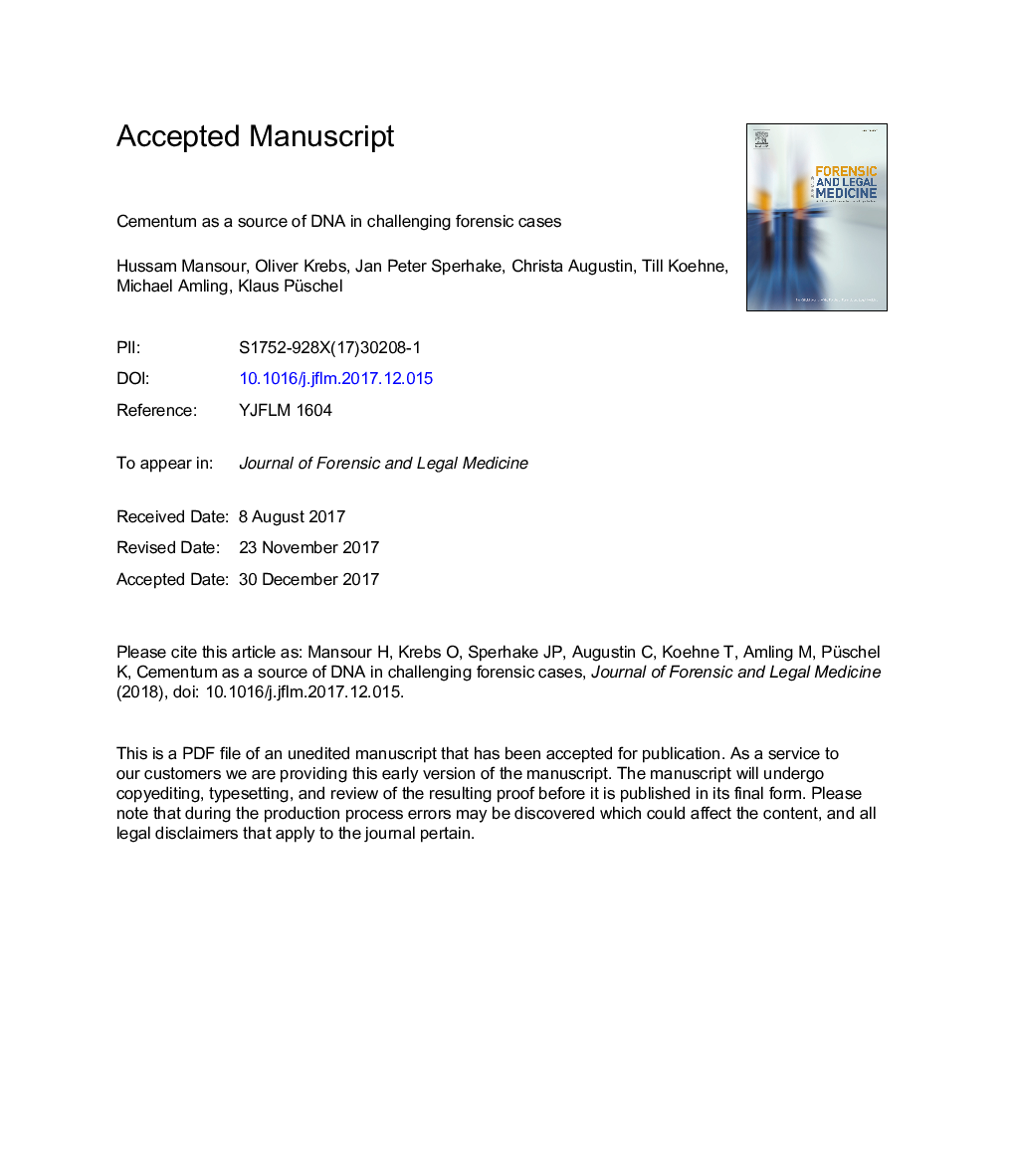| Article ID | Journal | Published Year | Pages | File Type |
|---|---|---|---|---|
| 6555055 | Journal of Forensic and Legal Medicine | 2018 | 18 Pages |
Abstract
Each forensic case is characterized by its own uniqueness. Deficient forensic cases require additional sources of human identifiers to assure the identity. We report on two different cases illustrating the role of teeth in answering challenging forensic questions. The first case involves identification of an adipocere male found in a car submersed in water for approximately 2 years. The second scenario, which involves paternity DNA testing of an exhumed body, was performed approximately 2.8 years post-mortem. The difficulty in anticipating the degradation of the DNA is one of the main obstacles. DNA profiling of dental tissues, DNA quantification by using real-time PCR (PowerQuant⢠System/Promega) and a histological dental examination have been performed to address the encountered impediments of adverse post-mortem changes. Our results demonstrate that despite the adverse environmental conditions, a successful STR profile of DNA isolated from the root of teeth can be generated with respect to tooth type and apportion. We conclude that cementocytes are a fruitful source of DNA. Cementum resists DNA degradation in comparison to other tissues with respect to the intra- and inter-individual variation of histological and anatomical structures.
Related Topics
Life Sciences
Biochemistry, Genetics and Molecular Biology
Genetics
Authors
Hussam Mansour, Oliver Krebs, Jan Peter Sperhake, Christa Augustin, Till Koehne, Michael Amling, Klaus Püschel,
